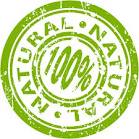In order to determine the long-term effects from vitamin supplements in smokers, ATBC researchers followed the participants for an additional eight years after the trial ended. The findings from this follow-up study, published in the July 23, 2003 issue of the Journal of the American Medical Association, as well as the initial trial results, are summarized in this fact sheet.
1. What was the purpose and design of the Alpha-Tocopherol, Beta-Carotene Cancer Prevention (ATBC) Trial?
The Alpha-Tocopherol, Beta-Carotene Cancer Prevention (ATBC) Trial was a cancer prevention trial conducted by the U.S. National Cancer Institute (NCI) and the National Public Health Institute of Finland from 1985 to 1993. The purpose of the study was to determine whether certain vitamin supplements would prevent lung cancer and other cancers in a group of 29,133 male smokers in Finland. The 50- to 69-year-old participants took a pill daily for five to eight years that contained one of the following: 50 milligrams (mg) alpha-tocopherol (a form of vitamin E), 20 mg of beta-carotene (a precursor of vitamin A), both, or a placebo (inactive pill that looked like the vitamin).
2. What were the principal findings?
• ATBC researchers reported that men who took beta-carotene had an 18 percent increased incidence of lung cancers and an 8 percent increased overall mortality. Vitamin E had no effect on lung cancer incidence or overall mortality. The men taking both supplements had outcomes similar to those taking beta-carotene alone (New England Journal of Medicine 1994;330:1029).
• The adverse effects of beta-carotene appeared stronger in men with a relatively modest alcohol intake (more than 11 grams per day; 15 grams of alcohol is equivalent to one drink) and in those smoking at least 20 cigarettes daily (Journal of the National Cancer Institute1996;88:1560).
• Participants taking vitamin E had 32 percent fewer cases of prostate cancer and 41 percent fewer deaths from prostate cancer. Death from hemorrhagic stroke (a deficit of blood to the brain due to the rupture of a blood vessel) was also increased by 50 percent in men taking alpha-tocopherol supplements; the increase occurred primarily among men with hypertension. (Journal of the National Cancer Institute 1998;90:440 and Arterioscler Thromb Vasc Biol 2000;20:230).
3. What were the conclusions and recommendations from the post-trial follow-up?(Journal of American Medical Association 2003;290:476)
• The adverse effects from beta-carotene and the beneficial effects from supplementation with alpha-tocopherol (vitamin E) largely disappeared during the post-trial follow-up period.
• The findings indicate a symmetry in the time course during and after the trial. That is, the time it took for the elevated lung cancer rates and lower prostate cancer rates to occur was similar to the time for these adverse and beneficial effects to disappear.
• There were no additional beneficial late effects on cancer or mortality observed after the trial ended.
• The results of both the trial and post-trial follow-up of the ATBC Study, in conjunction with results from the CARET Study (beta-Carotene and Retinol Efficacy Trial) completed in 1996, continue to support the recommendation that beta-carotene supplementation should be avoided by smokers. The possible preventive effects of alpha-tocopherol on prostate cancer require confirmation in other ongoing trials.
• Continued follow-up of the participants will provide unique and valuable information on the duration of trial effects and potential late effects of intervention with these antioxidant vitamins. Further follow-up will also contribute to our understanding of the biological mechanisms through which such hemoprevention agents affect carcinogenesis and human cancer risk.








